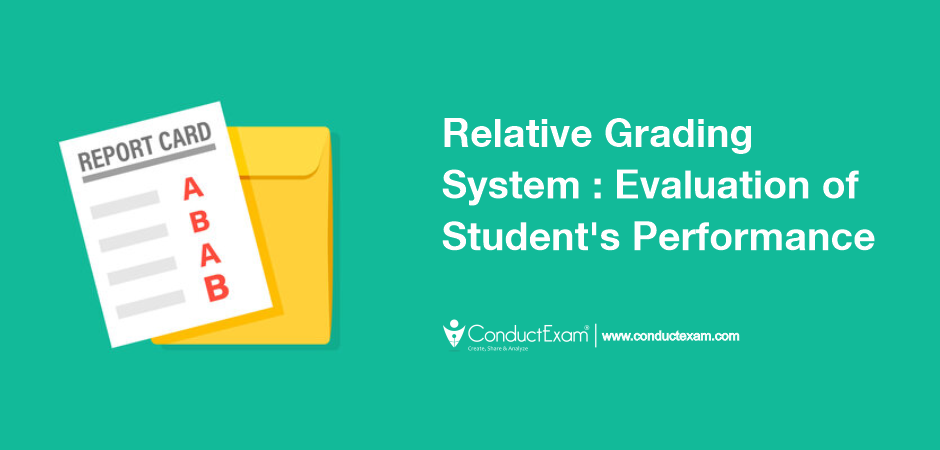Introduction
Education is a fundamental and most important pillar of society, which is used to shape the minds and futures of individuals. On the other hand expertise or technology advancement in education continues to evolve, so do the methods of assessing student performance. The evaluation of student performance is a crucial part of the academic process. In addition to serving as a benchmark for students’ achievements, it is also useful for tracking their growth over time. Among the various evaluation systems, the relative grading system has gained significant attention.
However, There are several techniques for assigning grades, it depends on the percentage of points earned in the class. There are two types of grading systems. Absolute Grading and Relative Grading. So now you have a question in mind about the relative grading system and how it differs from the absolute system.
What is Relative Grading System?
Student’s performance is assessed by comparing their performance with their performance rather than by comparing it to a fixed standard, which is known as norm-referenced grading. While using this system, students are ranked or classified by their performance against others in the same class.
Furthermore, One of the primary objectives of the relative grading system is to differentiate students based on their comparable capabilities and achievements. It aims to provide a fair and comprehensive evaluation by considering the performance distribution within a specific group. Comparing students to their peers, allows educators to understand their standing about others and make meaningful decisions. To better understand the relative grading we have to understand the absolute grading system.
What is an Absolute Grading System?
In absolute grading, instructors pre-specify performance standards. Here is the example you easily understand what it is.
Predetermined Grades
- Grade A – 81 to 100%
- Grade B – 71 to 80%
- Grade C – 61 to 70%
- Grade D – 41 to 60%
Now let’s see the advantages of the relative grading system and what are some drawbacks of it.
Advantages of Relative Grading System
1) Motivating Excellence
First the relative grading system creates a competitive environment that can motivate students to strive for excellence. As they are aware that their performance is being compared to their skills, students are often encouraged to put in extra effort and improve their skills. Healthy competition can motivate students to work harder, be more engaged in their studies, and develop a strong work ethic, all of which contribute to their overall academic development.
2) Personalized Learning
Second these solution helps distinguish students’ abilities and achievements by providing a clear ranking system. This enables educators to identify top-performing students, average performers, and those who may need additional support, facilitating targeted interventions and personalized instruction.
It allows for personalized learning experiences. By understanding the unique strengths and weaknesses of each student with their peers, educators can tailor their teaching strategies to meet individual needs. This personalized approach enhances the learning process, as students receive targeted support and instruction, maximizing their potential for growth and success. Personalized learning is the main trend of online exam software.
Also Read: Online Exam Software Trends 2023
3) Removes Biases from the Examination
This system helps mitigate the influence of biases that can affect traditional grading systems. By comparing students’ performance within their area of knowledge, the focus shifts from external factors such as gender, race, or socio-economic background. This promotes a more objective evaluation and reduces the potential for discrimination or unfair treatment.
4) Contextual Assessment with Relative Grading System
By considering the performance of the entire class, relative grading takes into account the learning environment and the cohort’s overall performance. It can provide a better understanding of the level of difficulty of a particular course or assignment, contextualizing individual achievements.
5) Relative Grading in Online Examination
In the era of remote learning and online examination, relative grading can be particularly advantageous. It enables educators to account for variations in access to resources and technological limitations that students may face. By comparing students, the relative grading system ensures fairness and equity in the evaluation process, regardless of the mode of instruction.
6) Offers Accurate Feedback
Relative grading provides students with accurate feedback on their performance. By knowing where they stand in comparison to others, students gain valuable insights into their strengths and areas for improvement. This feedback can guide their learning strategies, target specific weaknesses, and help them set realistic goals for academic growth.
7) Customizability
This system offers flexibility and customizability. Educators can adjust grading criteria and standards to meet the specific needs of the course, subject matter, or student population. This allows for a more subtle evaluation that aligns with the learning objectives and enables educators to assess student’s performance in a way that best suits the educational context.
In summary, The relative grading system offers several advantages that contribute to a comprehensive and fair evaluation of students’ performance.
The relative Grading System also helps to adapt the NEP 2020 (National Education Policy 2020). Moreover, NEP 2020 encourages a more all-inclusive and inter-diverse approach to education, which is better suited to the relative grading system. The NEP recognized the importance of fostering equity in education and eradicating prejudice. Relative grading can assist in this by ensuring that students are evaluated based on their achievements rather than on external factors such as socio-economic status. If you don’t know what is the NEP 2020. Please read below.
Also Read: NEP 2020 – Change in the Environment of the examination system
Difference between Absolute and Relative Grading System
If You want to calculate your relative grading there are some websites as a free tool to calculate the system. Grade Calculator is one of them.
Conclusion
The relative grading system serves as a method to evaluate student performance by comparing it to the achievements of their peers. Moreover, It offers several advantages. It can be more effective than absolute grading in certain circumstances. In addition, it provides a more fair and effective method for evaluating student performance. Colleges looking to employ a relative grading system in their exams can benefit from Conduct Exam’s Online Exam Software.
It can provide valuable insights into students’ relative standing, it should be complemented with other assessment methods to ensure a comprehensive understanding of their abilities, growth, and potential. A balanced approach that considers both relative and absolute measures can better support students’ learning journeys and provide a more holistic evaluation of their capabilities.






Leave A Comment